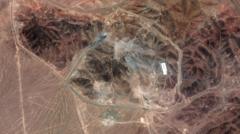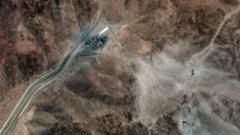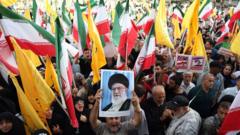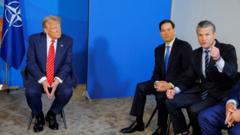The Supreme Leader's re-emergence comes against a backdrop of devastation and growing dissent, as criticism of his leadership mounts in the wake of military losses and a faltering economy.**
Iran's Supreme Leader Faces a Changed Nation Post-War**
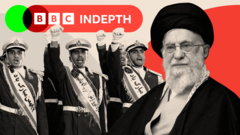
Iran's Supreme Leader Faces a Changed Nation Post-War**
After a prolonged absence during the conflict with Israel, Ayatollah Ali Khamenei is set to confront a transformed Iran upon his return.**
After nearly two weeks in a hidden bunker amid Iran's conflict with Israel, Ayatollah Ali Khamenei, the 86-year-old Supreme Leader, is reportedly contemplating a cautious return to the public eye due to a fragile ceasefire negotiated by U.S. President Donald Trump and Qatar's Emir. The Supreme Leader has avoided direct contact with officials, fearing assassination attempts fueled by tension with Israel. His potential return could simultaneously shed light on a nation grappling with death, destruction, and a political landscape transformed by war.
The military conflict has significantly weakened Iran's resolve, triggering questions about Khamenei's long-term leadership. As the air war caused significant loss within Iran's armed forces and infrastructure, the Supreme Leader may appear on state television proclaiming victory, yet the grim realities prior to his re-emergence may starkly contrast with his narratives.
Many Iranians hold Khamenei accountable for what they perceive as a reckless pursuit of confrontation with Israel and the U.S., associating his leadership with national calamity and economic struggles. The conflict has cut deep, harming the economy and diminishing support for the regime's ideological tenets — notably the goal to dismantle Israel, which lacks broad national backing.
An inconclusive war has ignited growing dissent at the top echelons of power, with speculation of potential changes in leadership circulating among religious scholars in Qom who may intervene to shift the dynamic. Observers believe that mounting frustration among ordinary citizens could catalyze a significant reckoning in Iranian governance.
Despite some Iranians exhibiting solidarity and camaraderie during the bombing campaigns, a palpable resentment towards the regime lingers. Many express a desire for regime change but hesitate to endorse foreign intervention. The airstrikes also injured Iran’s nuclear ambitions, with some facilities sustaining damage, although significant missile capabilities remain hidden underground.
Khamenei faces an uncertain future as his condition declines with age and internal discontent surfaces among citizens who suffer from the regime's relentless grip. Reports suggest ongoing executions of dissenters will only deepen tensions, as many anticipate further oppression rather than any liberalization or reform.
As Khamenei considers continuity for the Islamic Republic, he may contemplate an orderly transfer of power, potentially to a senior cleric or a ruling council, to safeguard the very structure of power he created over the past decades. The immediate future remains fraught with the potential for internal upheaval, as many Iranians await the response to emerging realities since the war's beginning.



